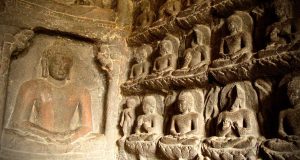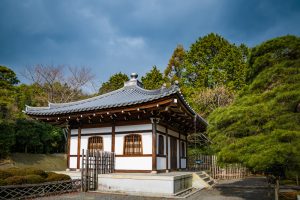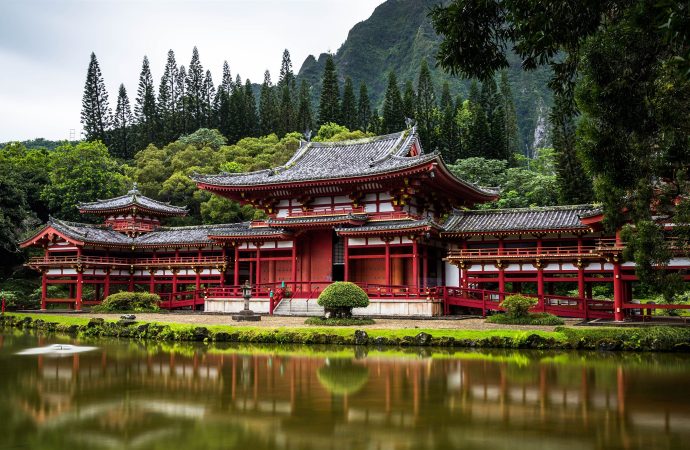The Myoshinji Temple in Kyoto is a sanctuary of tranquility and contemplation, offering visitors a serene space for silent reflections amidst the hustle and bustle of the city. we delve into the essence of Myoshinji Temple, exploring its history, architecture, cultural significance, and the profound experience of silent contemplation it offers to seekers of inner
The Myoshinji Temple in Kyoto is a sanctuary of tranquility and contemplation, offering visitors a serene space for silent reflections amidst the hustle and bustle of the city. we delve into the essence of Myoshinji Temple, exploring its history, architecture, cultural significance, and the profound experience of silent contemplation it offers to seekers of inner peace.
History of Myoshinji Temple
Founded in 1337, Myoshinji Temple holds a rich history dating back to the Muromachi period in Japan. Initially established as a memorial for Emperor travel guide Hanazono, the temple has since evolved into a prominent center for Zen Buddhism, influencing the spiritual landscape of Kyoto and beyond.
Architecture and Design
Myoshinji Temple boasts traditional Japanese architecture characterized by elegant simplicity and harmonious design. The main hall, known as the Butsudan, houses a revered statue of Shakyamuni Buddha, while the surrounding structures showcase exquisite craftsmanship and intricate wooden carvings.

Image by yandex.com
Silent Contemplation Practices
At the heart of Myoshinji Temple lies the practice of silent contemplation, a cornerstone of Zen Buddhism. Visitors are invited to partake in meditation sessions guided by experienced monks, offering an opportunity to quiet the mind and cultivate mindfulness amidst the serene ambience of the temple grounds.
Gardens of Myoshinji Temple
The temple grounds feature meticulously landscaped gardens, including traditional Zen gardens designed to evoke a sense of tranquility and harmony with nature. Each element within the gardens carries symbolic significance, providing a backdrop for deep reflection and spiritual rejuvenation.
Cultural Events and Festivals
Throughout the year, Myoshinji Temple hosts various cultural events and festivals, celebrating the rich heritage of Japanese Buddhism. From traditional tea ceremonies to vibrant flower festivals, these events offer visitors a glimpse into the cultural tapestry of Kyoto.
Visiting Myoshinji Temple
Visitors are welcome to explore the temple grounds during designated hours of operation, with admission fees contributing to the preservation of this sacred site. Guided tours are available for those seeking deeper insights into the history and teachings of Myoshinji Temple.
Silent Reflections
In the tranquil embrace of Myoshinji Temple, one can embark on a journey of self-discovery and spiritual awakening. Through silent reflection and meditation, visitors can transcend the distractions of everyday life and connect with the essence of their being, fostering a profound sense of inner peace and clarity.
Tradition in Every Sip
The tea ceremony holds a special place in Japanese culture, symbolizing harmony, respect, and mindfulness. At Myoshinji Temple, visitors can partake in this time-honored ritual, savoring each moment as they prepare and enjoy a bowl of matcha tea in the tranquil surroundings of the temple grounds.

Image by yandex.com
Is Myoshinji Temple open to the public all year round?
Yes, Myoshinji Temple is open to the public throughout the year. However, it’s essential to check for any temporary closures or special events that may affect regular visiting hours.
What is the significance of the temple’s architecture?
The architecture of Myoshinji Temple reflects centuries of cultural and spiritual significance. Its design embodies the principles of Zen Buddhism, emphasizing simplicity, harmony, and reverence for nature.
Can visitors participate in meditation sessions?
Yes, visitors are welcome to participate in meditation sessions offered at Myoshinji Temple. These sessions provide an opportunity to experience the transformative power of Zen practice in a serene and supportive environment.
Are there any restrictions for photography?
While photography is generally permitted within the temple grounds, visitors are asked to exercise discretion and respect the sacredness of the surroundings. Certain areas may be designated as photography-free zones out of respect for ongoing rituals and ceremonies.
Conclusion:
As custodians of this sacred space, the caretakers of Myoshinji Temple are dedicated to preserving its legacy for future generations. Through ongoing conservation efforts, community engagement, and educational initiatives, the temple continues to serve as a beacon of serenity and enlightenment in an ever-changing world. Whether seeking solace in the beauty of its gardens, participating in a traditional tea ceremony, or simply basking in the peaceful atmosphere, a visit to Myoshinji Temple is sure to leave a lasting impression on the heart and soul of every traveler.






















